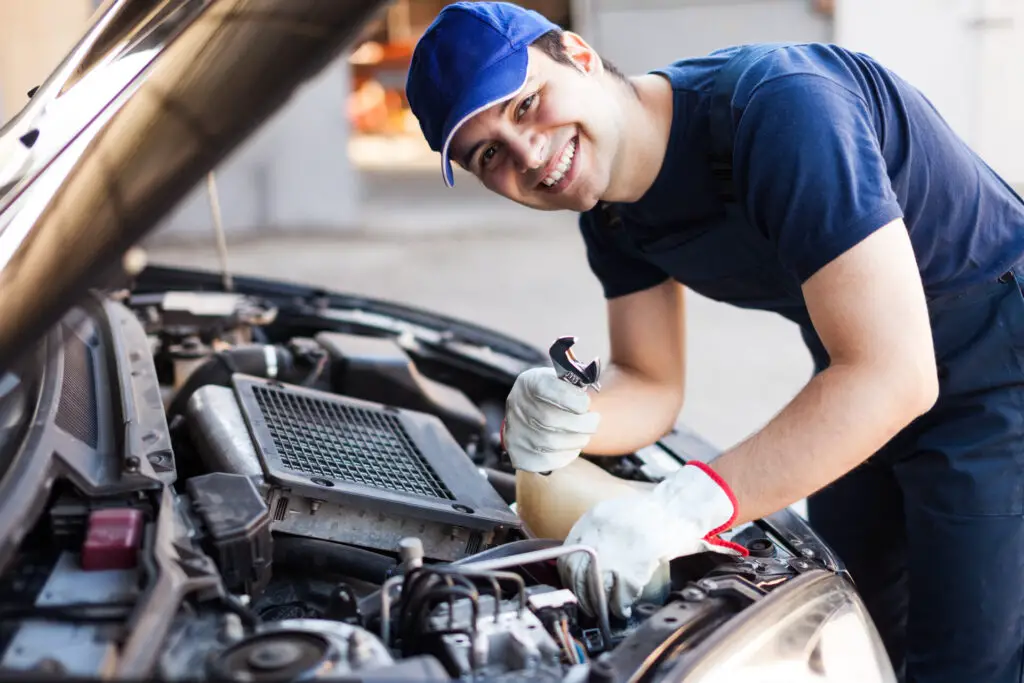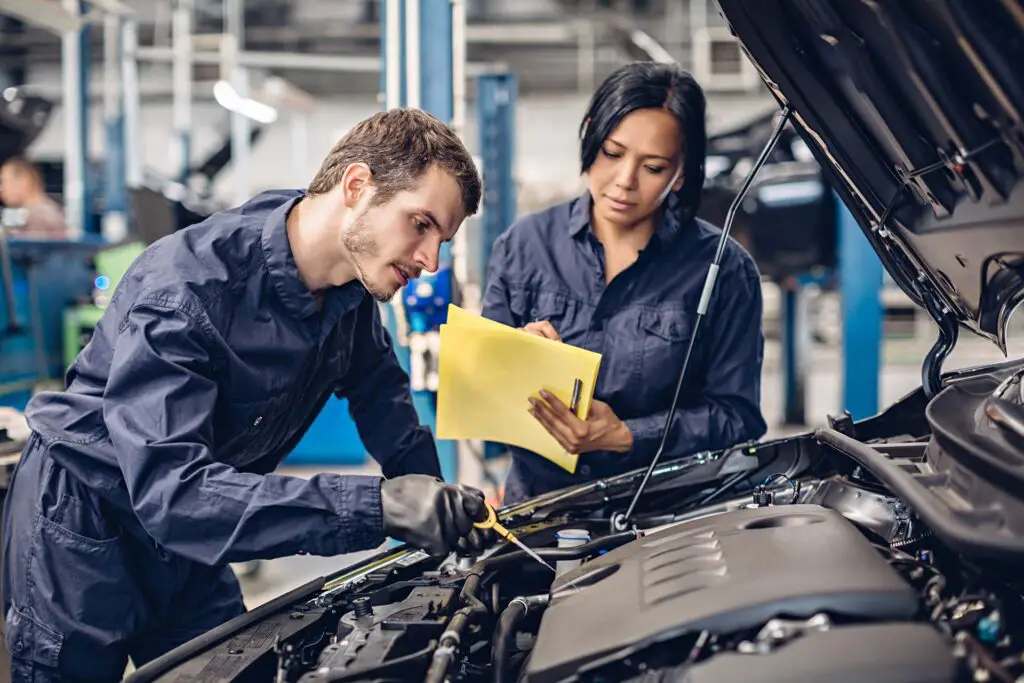Keeping the windshield in perfect condition means it has to be clean, too. But if you wonder how to repair a windshield washer, worry not since it doesn’t have to be an enigma. Working on your car’s intricate parts might seem intimidating if you’re new at vehicle maintenance. Give yourself that confidence boost in keeping your car looking (and driving) its best and check out this guide for repairing those pesky windshield washers like a pro.
To repair a windshield washer, first, diagnose the issue by checking the fluid levels, fuses, and hoses. If the problem is a clogged nozzle, use a needle or pin to clear it. If it’s a faulty pump, replace it with a new one. You may also need to check the wiring and the switch for any signs of damage.
The Benefits of Learning How to Repair a Windshield Washer and Maintaining Your Vehicle
Learning how to repair a windshield washer and maintaining your four-wheeler has many benefits. First, it can save you money on costly repairs and replacements. It also allows you to detect potential issues early on and prevent them from turning into major problems.
Not to mention that regular maintenance can also prolong the lifespan of your vehicle and improve its overall performance. And if you’re truly a car lover like myself, you’ll know how these maintenance methods promote safety on the road by ensuring all components of your car, including the windshield washer, are functioning properly. Overall, taking the time to learn how to repair and maintain your vehicle is a valuable investment in both your finances and your safety.

Get to Know Some Common Symptoms of a Faulty Windshield Washer
Knowing some common symptoms of a faulty windshield washer can help you diagnose and repair issues before they become more serious. Here are some symptoms to watch for that helped me diagnose and fix the issue promptly:
- No fluid sprays – If you press the washer button and nothing happens, it could indicate a blown fuse, a faulty pump, or a broken switch.
- Weak or no spray – If you hear the washer pump running, but no fluid comes out, it could indicate a clogged or blocked nozzle, a kinked hose, or a low fluid level.
- Uneven spray – If the fluid sprays unevenly or only on one side, it could indicate a clogged or misaligned nozzle.
- Fluid leaks – If you notice that the washer fluid is leaking onto the ground under your vehicle, it could indicate a cracked or damaged hose, pump, or reservoir.
- Unusual noises – If you hear unusual noises, such as squeaking or grinding, when you press the washer button, it could indicate a problem with the pump or motor.
What Are the Possible Causes of a Windshield Washer Malfunction?
We’ve all been there – you’re driving down the road, and suddenly, you realize your windshield is covered in dirt, bugs, or other debris, obstructing your view. You reach for the windshield washer button, but nothing happens. A malfunctioning windshield washer can be frustrating and even dangerous, but what could be causing the problem? Here are some of the most common causes you should know about:
- Clogged nozzles – Over time, the nozzles that spray the windshield with washer fluid can become clogged with dirt, debris, or mineral deposits, leading to a weak or uneven spray.
- Damaged or leaking hoses – The hoses that carry the washer fluid from the reservoir to the nozzles can become cracked, kinked, or detached, causing leaks or low pressure.
- Faulty washer pump – The washer pump is responsible for drawing fluid from the reservoir and sending it to the nozzles. A malfunctioning pump can result in a weak or nonexistent spray.
- Empty or contaminated washer fluid reservoir – If the reservoir runs dry, there will be no washer fluid available to spray onto the windshield. Also, if the fluid in the reservoir is contaminated with dirt or debris, it can clog the system or damage the pump.
Other potential causes of a windshield washer malfunction include a blown fuse, a faulty switch or wiring, or a malfunctioning windshield wiper motor.

Before You Actually Begin, Gather the Necessary Tools and Materials
Before you begin repairing your windshield washer, it’s important to gather all the necessary tools and materials to ensure a smooth and efficient process. Here are some of the items you may need:
- Washer fluid – Make sure you have enough windshield washer fluid to refill the reservoir once you’ve finished repairing the system. I always use Prestone Bug Wash Windshield Washer Fluid.
- Pliers – You may need pliers to disconnect hoses or remove clamps.
- Screwdriver – Depending on your vehicle’s make and model, you may need a screwdriver to remove parts or access the washer pump.
- Needle or pin – A needle or pin can be useful for unclogging nozzles that are obstructed with dirt or debris.
- Replacement parts – If you’ve diagnosed a faulty pump or damaged hose, you may need to purchase replacement parts before beginning the repair.
- Towels or rags – Keep a few towels or rags handy to clean up any spilled washer fluid or debris.
- Safety glasses – It’s always a good idea to wear safety glasses to protect your eyes from any flying debris or fluid.
By gathering these tools and materials ahead of time, you’ll be prepared to tackle any repairs or maintenance tasks that your windshield washer system may require. In fact, this is one tip I never skip whatever fixing I do with my four-wheeler.

How to Repair a Windshield Washer Reservoir?
Your car’s windshield washer reservoir is an essential component for keeping your windshield clean and clear while driving. However, like any other part of your vehicle, it can become damaged or malfunction over time.
A cracked or leaking reservoir can result in a loss of washer fluid, while a clogged or contaminated reservoir can prevent proper fluid flow, leaving you with a dirty windshield. Luckily, repairing a windshield washer reservoir is a relatively straightforward process that can save you both time and money. Get back to driving safely and with clear vision with the following steps.
Cleaning or Replacing Clogged Nozzles
Over time, the nozzles that spray the windshield with washer fluid can become clogged with dirt, debris, or mineral deposits. To fix this issue, you can try clearing the nozzle with a needle or pin or replace the nozzle entirely if it’s severely damaged.
Inspecting and Repairing Damaged Hoses
The hoses that carry washer fluid from the reservoir to the nozzles can become damaged, leading to leaks or low pressure. Inspect the hoses for cracks, kinks, or detachments, and replace any damaged hoses as necessary.
Troubleshooting and Replacing a Faulty Washer Pump
The washer pump is responsible for drawing fluid from the reservoir and sending it to the nozzles. If the pump is faulty, it can result in a weak or nonexistent spray. Diagnose the issue by checking the pump’s electrical connections and testing its voltage, and replacing the pump if necessary.
Refilling and Maintaining the Washer Fluid Reservoir
Finally, refill the reservoir with a high-quality windshield washer fluid and regularly maintain it to ensure it stays clean and free of debris.
Practice Regular Maintenance and Enhance Your Vehicle Maintenance Skills
Enhancing your vehicle maintenance skills can save you time and money and ensure your safety on the road. Begin with basic maintenance tasks, such as getting the best oil for a diesel engine (I recommend AC Delco DexosD), inspecting and replacing the tires, and topping up fluids. As you gain more confidence and knowledge, you can tackle more complex repairs and maintenance tasks.
But what helped me through the whole process was taking my time. Rushing through a repair or maintenance task can result in mistakes or even injury. Take your time, too, read the instructions carefully, and follow safety procedures. Regularly maintaining your vehicle will prevent costly repairs and prolong its lifespan. Create a schedule and stick to it, checking your vehicle for issues before they become bigger problems.

Learn From Online Resources and Tutorials
Start by learning more about your vehicle’s make and model, including its systems and components. You can find valuable information in your vehicle’s owner manual, online forums, or by taking a course or workshop.
Online resources and tutorials can be valuable tools for enhancing your vehicle maintenance skills. Here are some examples of resources you can use:
- Manufacturer websites – Many vehicle manufacturers offer online resources, including repair manuals and how-to guides, for their vehicles. These resources can provide detailed information specific to your vehicle’s make and model.
- YouTube videos – YouTube is a great source of video tutorials on a wide range of vehicle maintenance tasks, from changing a tire to replacing a brake pad. Make sure to choose reputable channels and watch multiple videos to get a comprehensive understanding of the task.
- Online forums – Online forums are a great place to connect with other car enthusiasts and get advice and tips on vehicle maintenance. Make sure to ask specific questions and provide enough detail about your vehicle and the issue you’re experiencing.
Connect With Fellow DIY Enthusiasts and Mechanics
Connecting with fellow DIY enthusiasts and mechanics can be a great way to enhance your vehicle maintenance skills. Here are some ways to connect with others:
- Join online communities – Online communities, such as forums and social media groups, can be a great way to connect with others who share your interest in DIY vehicle maintenance. Ask questions, share your experiences, and learn from others.
- Attend workshops and events – Workshops and events, such as car shows and DIY classes, can provide hands-on experience and opportunities to learn from experts and fellow enthusiasts.
- Volunteer – Consider volunteering at a local car club or community garage. This can provide you with the opportunity to learn from experienced mechanics and work on a variety of vehicles.
- Find a mentor – If you have a friend or family member who is experienced in vehicle maintenance, ask them to mentor you. They can provide guidance and advice as you work on your vehicle.
Don’t be afraid to ask questions, share your experiences, and seek out guidance from those with more experience.

Learning How to Repair a Cracked Windshield Washer Reservoir Will Also Help You Maintain Your Car
It will take some time until you’ll be completely confident to repair your four-wheeler on your own, but it surely is worth the wait. Not only will you save time and money by avoiding costly trips to the mechanic’s shop, but you’ll also gain valuable automotive maintenance knowledge that comes in handy for keeping your car running smoothly. So don your tool belt, find a shady spot, and get ready for a hands-on automotive adventure. Best of luck with your endeavors – keeping your car in top condition is always an admirable pursuit.








